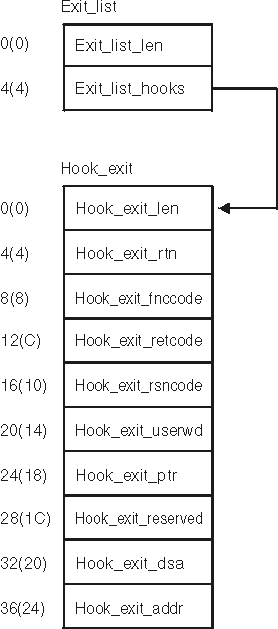CEEBINT high-level language user exit interface
Language Environment provides CEEBINT for enclave initialization. You can code CEEBINT in non-XPLINK C and C++, Fortran, PL/I, or Language Environment-conforming assembler. You cannot code CEEBINT as an XPLINK application. CEEBINT is not invoked for an XPLINK application. COBOL programs can use CEEBINT, but CEEBINT cannot be written in COBOL or be used to call COBOL programs.
CEEBINT is supported with POSIX(ON) and in a threaded environment. It is driven only on the initial thread.
- The user exit must not be a main-designated routine. That is, it must not be a C or C++ main function, and OPTIONS(MAIN) must not be specified for PL/I applications.
- CEEBINT must be linked with compiled code. If you do not provide an initialization user exit, an IBM-supplied default, which simply returns control to your application, is linked with the compiled code. When written in C++, CEEBINT must be linked with your application and it can only function as an application-specific user exit.
- The exit cannot be written in COBOL.
- When CEEBINT is written in C/C++, the
following must be coded so that SMP/E can maintain the CSECT and properly
link the intended user exit:
#pragma map(CEEBINT,"CEEBINT") - The exit should be coded so that it returns for all unknown function codes.
- C or C++ constructs such as the exit(), abort(), raise(SIGTERM), and raise(SIGABRT) functions terminate the enclave.
- A PL/I EXIT or STOP statement terminates the enclave.
- Use the callable service IBMHKS to turn hooks on and off. For more information about IBMHKS, see PL/I for MVS & VM Programming Guide.
- C or C++ functions such as exit(), abort(), raise(SIGTERM), and raise(SIGABRT) terminate the entire application as well as the user exit.
- Number of arguments in parameter list (input)
- A fullword binary integer
- On entry: Contains 7
- On exit: Not applicable
- Return code (output)
- A fullword binary integer
- On entry: 0
- On exit: Able to be set by the exit, but not interrogated by Language Environment
- Reason code (output)
- A fullword binary integer
- On entry: 0
- On exit: Able to be set by the exit, but not interrogated by Language Environment
- Function code (input)
- A fullword binary integer
- On entry: 1, indicating the exit is being driven for initialization
- On exit: Not applicable
- User word (input/output)
- A fullword binary integer
- On entry: Value of the user word (CEEAUE_USERWD) as set by the assembler user exit.
- On exit: The value set by the user exit, maintained by Language Environment and passed to subsequent user exits. It can be accessed from the main() function through the system programming facilities C __xusr() function.
- Address of the main program entry point (input)
- A fullword binary address
- On entry: The address of the routine that gains control first
- On exit: Not applicable
- Exit List Address (output)
- The address of the exit list control block, Exit_list
- On entry: 0
- On exit: 0, unless you establish a hook exit, in which case you would set this pointer and fill in relevant control blocks. The control blocks for Exit_list and Hook_exit are shown in the following figure.
As supplied, CEEBINT has only one exit defined that you can establish — the hook exit described by the Hook_exit control block. This exit gains control when hooks generated by the PL/I compiler TEST option are executed. You can establish this exit by setting appropriate pointers (A_Exits to Exit_list to Hook_exit).

- Exit_list_len
- The length of the control block; it must be 1
- Exit_list_hooks
- The address of the Hook_exit control block
- Hook_exit_len
- The length of the control block
- Hook_exit_rtn
- The address of a routine you want invoked for the exit. When the routine is invoked, it is passed the address of this control block. Since this routine is invoked only if the address you specify is nonzero, you can turn the exit on and off.
- Hook_exit_fnccode
- The function code with which the exit is invoked. This is always 1.
- Hook_exit_retcode
- The return code set by the exit. You must ensure that it conforms
to the following specifications:
- 0
- Requests that the Debug Tool be invoked next
- 4
- Requests that the program resume immediately
- 16
- Requests that the program be terminated
- Hook_exit_rsncode
- The reason code set by the exit. This is always zero.
- Hook_exit_userwd
- The user word passed to the user exits CEEBXITA and CEEBINT
- Hook_exit_ptr
- An exit-specific user word
- Hook_exit_reserved
- Reserved
- Hook_exit_dsa
- The contents of register 13 when the hook was executed
- Hook_exit_addr
- The address of the hook instruction executed